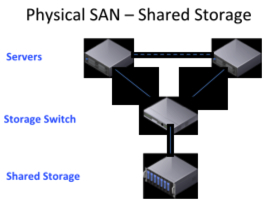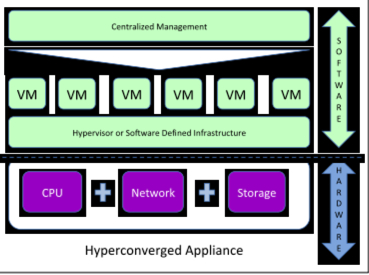Evaluator Group Released Research on Hyper-Converged Appliances
With brief product reviews of vendors HP, Maxta, Nutanix, Scale, Simplivity, and VMware
This is a Press Release edited by StorageNewsletter.com on April 6, 2015 at 3:51 pmEvaluator Group, Inc. has released new research on hyper-converged appliances, including an evaluation guide, comparison matrix, requirements workbook, and brief product reviews of vendors including HP, Maxta, Nutanix, Scale, Simplivity, and VMware.
Excerpt from the Evaluator Group Evaluation Guide:
A traditional physical datacenter infrastructure is defined as a connected ecosystem of servers, networking, and shared storage systems. These shared storage systems are shared by multiple servers over a physical network specifically designed to carry storage data using block (FC or hardware iSCSI) or file (NFS, SMB, software iSCSI, etc.). Servers are shared resources among clients (users) by a physical LAN/WAN network for compute. This flexibility provides administrators the ability to adapt more easily to changing business requirements.
Physical Data Center Infrastructure
A hyper-converged solution is another approach to delivering a virtualized infrastructure without the need for separate physical servers, networks, and storage. Hyper-converged appliances use internal (captive) storage to the physical server or DAS (DAS) and use pre-installed software to create a virtual datacenter infrastructure.
Hyper-converged Appliance Architecture
Hyper-converged technology is a term used to describe what some vendors are calling ‘infrastructure in a box’ or an ‘all-in-one solution.’ A hyper-converged solution is another approach to delivering a virtualized infrastructure without the need for separate physical servers, networks, and storage.
Many hyper-converged appliances can offer the ability to scale very large, known as web scale, and can be used to create a Software Defined Data Center (SDDC). As with physical data center infrastructures, a software-based virtual datacenter infrastructure creates an abstraction layer or virtualized software layer between the application and the hardware to provide shared resources and advanced data services, cloud services, and centralized management features.
The requirement by IT organizations to provide both higher levels of service and improved storage efficiency is driving a re-architecture of IT environments. One of the ways IT organizations seek to deliver the appropriate service levels for applications, while decreasing costs, is to utilize multiple types and price points of their infrastructure.
Unlike a traditional infrastructure of physical servers, networking, and storage components, hyper-converged solutions offer an infrastructure that eliminates physical external storage and networking cost while maintaining appropriate levels of service for most applications, enabling non-disruptive data movement, and simplifying management through centralized management.
Review of the products and use cases highlight 4 key benefits:
- Rapid deployment
- Simplicity of management
- In some cases, better use of compute and storage
- A way to reduce infrastructure complexity
Appliances are being deployed in 3 key areas:
- SMBs
- remote office systems
- web-scale private clouds
IT organizations evaluating the solutions should be considering:
- What are the overall objectives for the hyper-converged infrastructure
- How should they measure the ROI goals for the project
- What is the relative IT maturity
- What are the number and type of compute, network, and storage currently in use and what the requirements will be for the next few years
- How will storage management and data protection tools utilized and document
- What are the long-term implications of combining server, storage, and networking in the applicane when the technologies advance at different rates and require change-out for optimal execution.
Executive Summary of the hyper-converged research (registration needed)












 Subscribe to our free daily newsletter
Subscribe to our free daily newsletter
